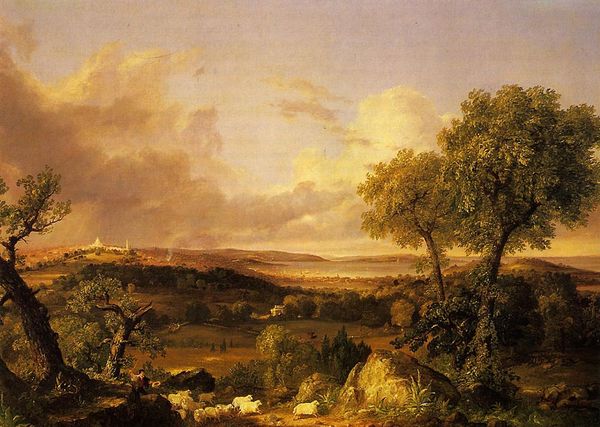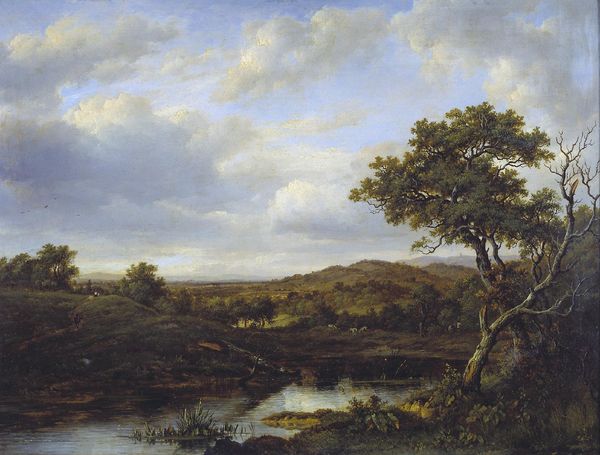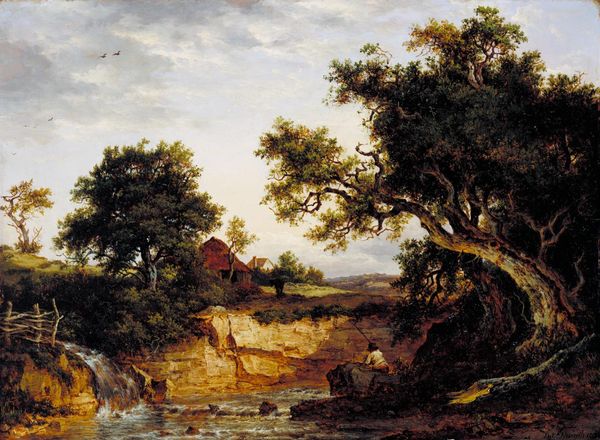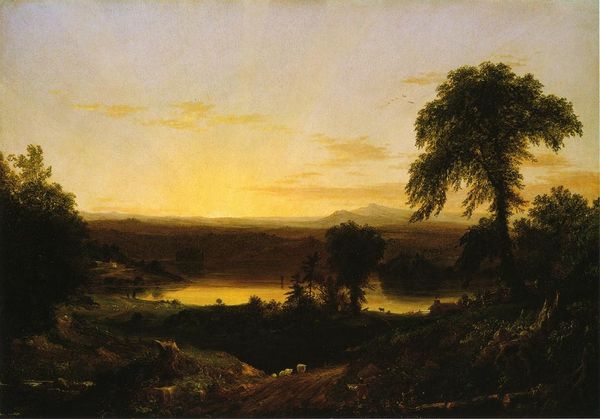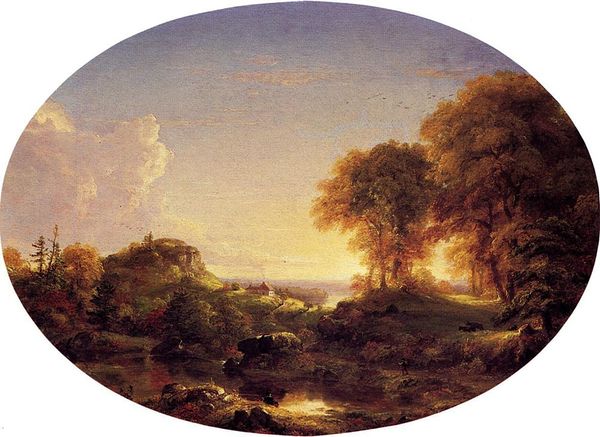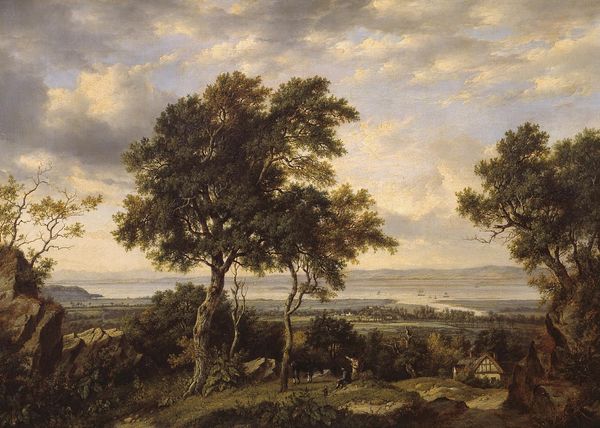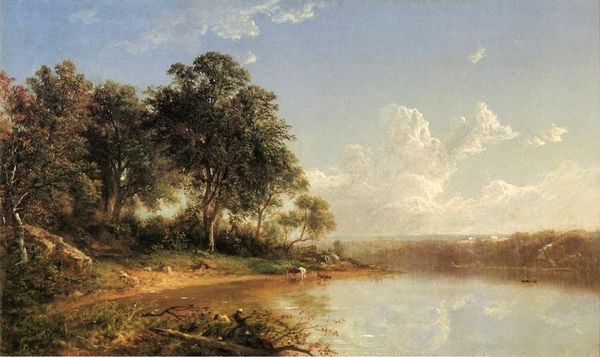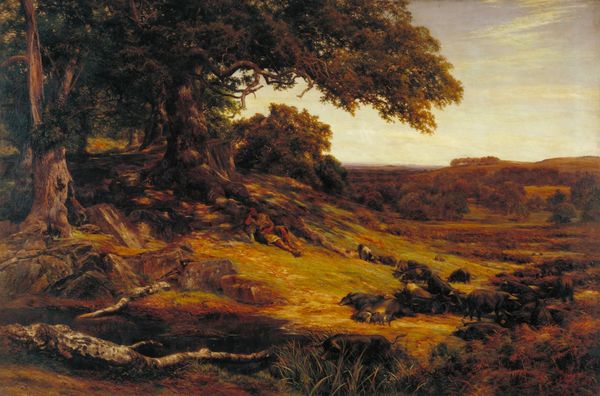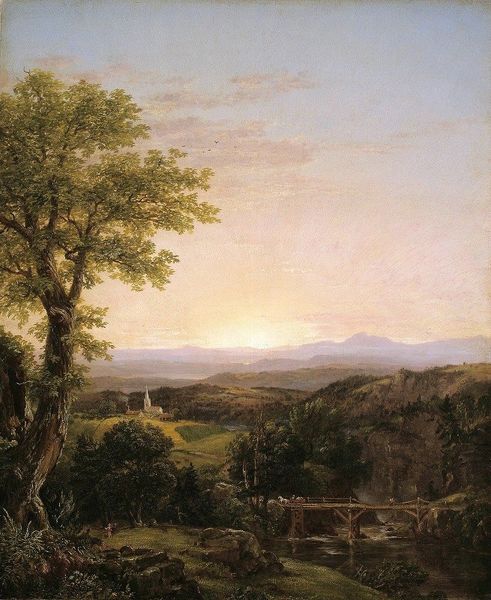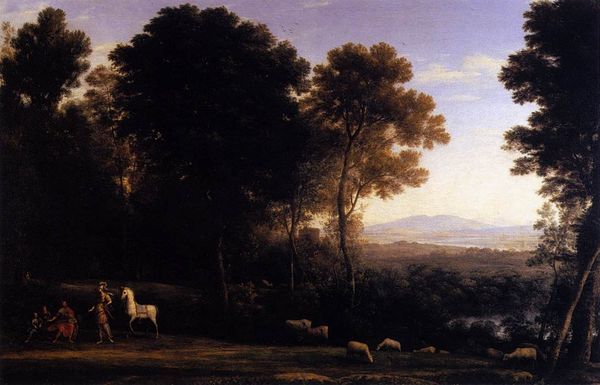
plein-air, oil-paint
#
tree
#
sky
#
plein-air
#
oil-paint
#
landscape
#
waterfall
#
river
#
nature
#
oil painting
#
forest
#
plant
#
romanticism
#
natural-landscape
#
hudson-river-school
#
water
#
nature
Dimensions: 58.42 x 48.9 cm
Copyright: Public domain
Curator: Here we have "Summer Twilight," an 1827 oil painting by Thomas Cole, held in a private collection. It exemplifies the Hudson River School's fascination with the American landscape. Editor: It's dreamy, isn't it? The light is incredibly soft, almost like looking at a stage set, everything bathed in this gentle luminescence. Curator: Cole’s use of plein-air studies allowed him to capture that very specific quality of light. The way he positions the waterfall on the left, with that group of animals drinking, and then opens the vista up toward the distance... it's about creating a narrative of harmony. A narrative deeply intertwined with America’s burgeoning national identity and relationship to nature. Editor: And a narrative of control. It looks romantic, but the landscape is almost too composed, neatly framing that central vista. Look at the work in the trees, and you start seeing the manipulation. The carefully placed rocks… the picturesque, almost story-book quality. What were the socio-economic pressures that asked for nature to be “tamed” on a canvas? Curator: Indeed. While Cole celebrated the sublime wilderness, his work often subtly promoted an arcadian ideal, erasing signs of Indigenous presence and glossing over the environmental impact of expansion. He grapples with the very real tension between untouched nature and the march of civilization, but ultimately sides with the narrative of progress and potential that defined the American project. Editor: Look closely at that tiny white structure, like a miniature version of Tara, on the middle distance's right-hand side. And if it's there, other structures—mills? churches?—would also have relied on this land's resources to be built, not the other way around. It's almost as if he knows that this “sublime wilderness” won't stay that way for very long. Curator: Absolutely. By understanding the ideological frameworks shaping Cole’s vision, we can unpack how notions of wilderness and national identity were – and are – actively constructed. His painting opens up vital conversations about our own responsibility in perpetuating myths of exceptionalism or forging a more just relationship with the land and its people. Editor: It makes you wonder about the paint itself, where did his pigments come from? What resources were extracted to create the pigments he employed to immortalize that perfect scenery? Everything, in the end, stems from somewhere. I'll never look at an idyllic painting without thinking about these things from now on. Curator: Indeed. Cole's "Summer Twilight" speaks to our complex relationship with the past.
Comments
No comments
Be the first to comment and join the conversation on the ultimate creative platform.
